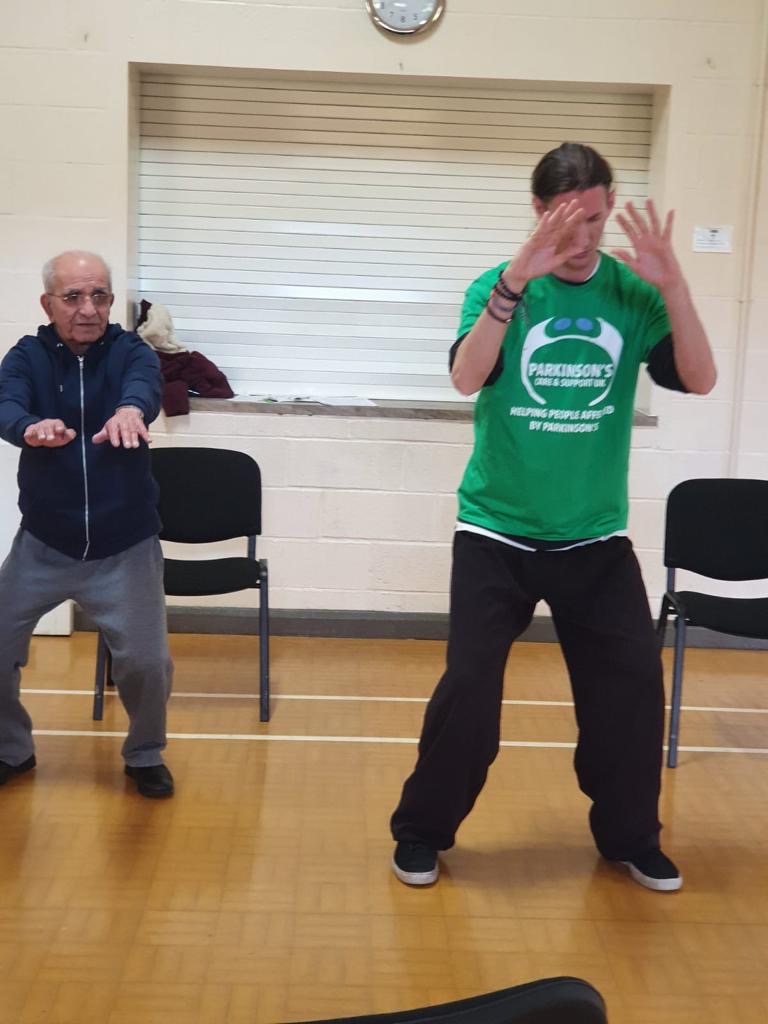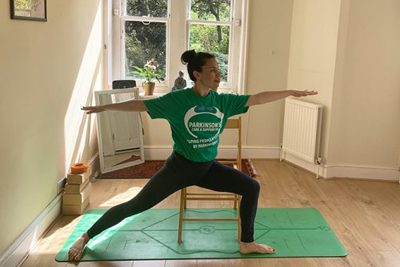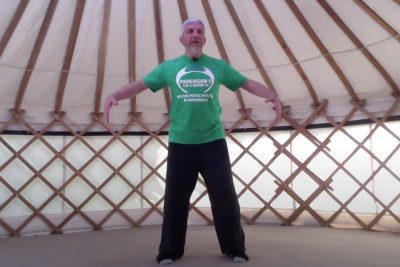What is Tremor in Parkinson’s?
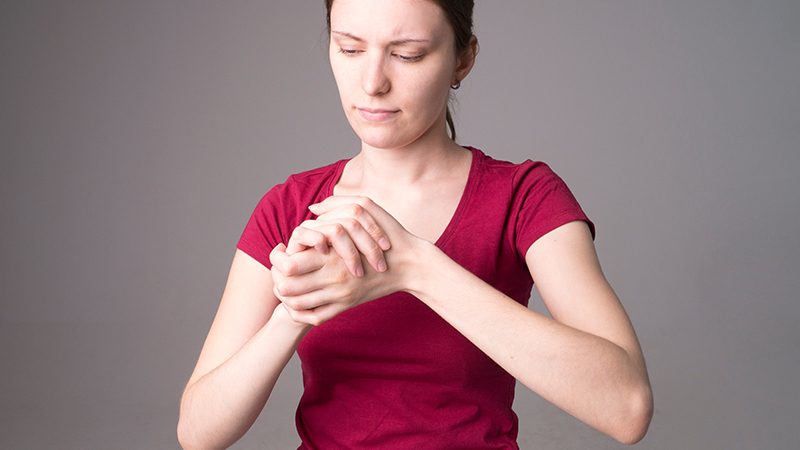
Tremor is very common in Parkinson’s. It affects between 70- 80% of people with Parkinson’s. Although many people, even those with Parkinson’s disease themselves, think of tremor as being the main problem in Parkinson’s, it isn’t—at least not for most. For most people with Parkinson’s, tremor is not debilitating.
A tremor is an involuntary quivering movement or shake.It can be internal or external. Internal tremors are felt within the body and cannot be seen by anyone. The typical Parkinson’s tremor occurs mostly at rest (“resting tremor”) and lessens during sleep and when the body part is actively in use. For example, your hand might shake while you’re sitting, or even while you’re walking, but when you reach out to shake hands with someone, the tremor is less noticeable or goes away entirely.
However, tremor can be annoying. It also attracts attention, so that people tend to keep their unruly hand in a pocket, or to sit on it when in public places. Since it often disappears with movement, it turns out that tremor does not interfere severely with activities of daily living. Many people report that their tremor goes away whilst exercise.
Like most symptoms of Parkinson’s disease, tremor is usually asymmetric. It starts generally on one side, which remains the more affected side forever. Having a tremor on one side does not mean that the other side will begin to shake as well. Many people have tremor on only one side throughout their illness. You can experience tremor in different parts of your body.
It appears that those with Parkinson’s whose major problem is tremor (relative to slowness, stiffness or walking walking) tend to have a much more benign course than others. They progress more slowly and probably live longer.
It also appears to be the case that tremor is the only symptom of Parkinson’s that may improve on its own- some who had severe tremors have seen them virtually disappear over the period of a decade.

Five main places you will experience Parkinson’s tremors.
The classic slow, rhythmic tremor of Parkinson’s disease typically starts in one hand, foot, or leg and can eventually affect both sides of the body. The resting tremor of Parkinson’s disease can also occur in the jaw, chin, mouth, or tongue. In addition, some people with Parkinson’s disease can experience a feeling of internal tremor, which is not necessarily noticeable to others.
1. Hands. Parkinson’s Disease tremors often start in the fingers or hands with what’s called a pill-rolling motion. Imagine holding a pill between your thumb and index finger and rolling it back and forth. Hand tremors can lead to Micrographia.
Micrographia is abnormally small or cramped handwriting. It is a secondary motor symptom experienced by some people with Parkinson’s Disease. Micrographia is often an early symptom of the disease. Not everyone with Parkinson’s has the same symptoms, and not all people with Parkinson’s experience Micrographia.
2. Foot. A Parkinson’s foot tremor is more likely to happen while you’re sitting or lying down with your feet at rest. If the tremor moves into your thigh muscles, it could look like your whole leg is shaking. Foot tremors disappear when you stand or walk because those are active movements. A foot or leg tremor while you’re standing may be another condition, such as Essential Tremor.
3. Jaw. This is common in people with Parkinson’s. It may look like you’re shivering. It can become bothersome if the tremor makes your teeth chatter. If you wear dentures, it could make them shift or fall out. Chewing eases, the tremor, so gum might help.
4. Tongue. It’s rare, but a tongue tremor can cause your entire head to shake, it can also result in speech problems as you will find it difficult to form your words.
5. Internal. Some people with Parkinson’s say they can feel a shaking sensation in their chest or abdomen. But can’t be seen from the outside.
What treatments are there for Tremors?
Firstly, in order to understand your tremors, you need to be open to identifying the root cause of them. When there are tremors, your body is sending you a message that something is seriously out of balance.
Robert Rodgers, author of Road to Recovery from Parkinson’s Disease says that these imbalances could involve:
This is just a short list. There are other factors that can bring about tremors or make them worse including certain medications.
As a charity that champions holistic health, we believe that once the root cause of your symptom is identified, then you can search for a treatment or therapy that will address the cause.
A wide variety of treatments for Parkinson’s tremor are currently available and include use of oral medications, injections with botulinum toxin and neurosurgical procedures. Some of these medications are not very effective in controlling tremor, these can worsen your symptoms with side effects. However, some people with Parkinson’s tremors notice changes in lifestyle significantly improves their tremors.
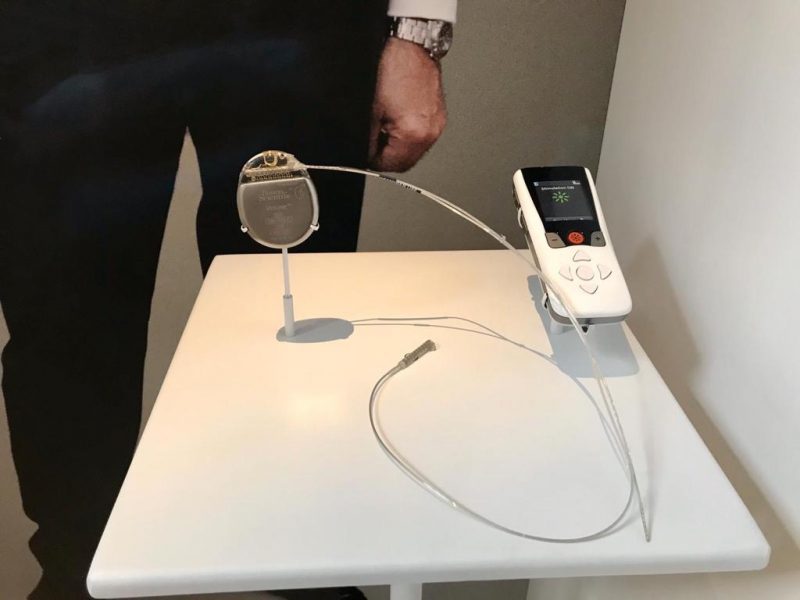
DBS
Deep brain stimulation (DBS) surgery was first approved in 1997 to treat Parkinson’s tremor, then in 2002 for the treatment of advanced Parkinson’s symptoms. More recently, in 2016, DBS surgery was approved for the earlier stages of PD, for people who have had PD for at least four years and have motor symptoms not adequately controlled with medication.
In DBS surgery, a small current is passed with high frequency through areas of the brain that are believed to block motor function. The procedure has a success rate of about 90% in decreasing or getting rid of Parkinson’s tremors. Using MRI (magnetic resonance imaging) and recordings of brain cell activity during the procedure.
A second procedure is performed to implant an IPG, impulse generator battery (like a pacemaker). The IPG is placed under the collarbone or in the abdomen. The IPG provides an electrical impulse to a part of the brain involved in motor function. Those who undergo DBS surgery are given a controller to turn the device on or off.
DBS is certainly the most effective for people who experience disabling tremors, wearing-off spells and medication-induced dyskinesias, with studies showing benefits lasting at least five years. That said, it is not a cure and it does not slow PD progression. It is also not right for every person with PD. It is not thought to improve speech or swallow issues, thinking problems or gait freezing.
Lifestyle Changes to Help Manage Tremors
Exercise
It is well known that exercise can reduce or even stop tremor in people with Parkinson’s. The act of physically moving during most exercise such as cycling, dancing, running or boxing have resulted in tremors disappearing during participation and in some cases for a while after.
It is vital for people with Parkinson’s to exercise regularly and to keep as active as possible. Normally when the limb is moving, the tremor will weaken or disappear. Regular exercise will keep tremor at bay.
Stress and Anxiety
Many patients experience an increase in the severity of their tremors when they are stressed. In fact, worrying, Anxiety and Fatigue can make tremor worse. Up to 50% of people with Parkinson’s will also suffer from Anxiety or Depression at some point during their illness. Common fears and worries that go along with PD may trigger anxiety. One is a fear of being unable to function independently. Parkinson’s medications create physical dependency and so people may be fearful during a sudden “off” period (the time of day when medication is not working). Another is a concern about being embarrassed, often related to interacting with others in public.
When you’re having severe anxiety, it can cause physical symptoms. Perceived stress, danger, and high levels of emotion usually set off anxiety. Anxiety can lead to a panic attack which can trigger your tremors.
The neural mechanisms that contribute to tremor amplification during stress, and also to the spontaneous variations in tremor, are unclear. Having such insights would be helpful for the development of improved treatment strategies for tremor.
It is important to eliminate stress from your life. This means any and everything that makes you more stressed or anxious. Distance yourself from toxic relationships, environments and people. Re-evaluate your working life. Make sure you fully participate in things that are positive, encouraging and helpful to you whether that be emotionally or physically.
We recommend that you use complementary and alternative therapies to reduce sources of stress and anxiety such as Mindfulness yoga, Qigong, Reiki, Meditation, aromatherapy, art and music. These have been proven to be very beneficial in people with Parkinson’s and do not carry side effects that pharmaceutical medications do. The psychological and behavioural treatment can reduce tremor and improve manual dexterity. Some people also use alternative treatments such as Valerian Root, CBD Oil, Mucuna Pruriens and these too have shown to improve stress and tremor in Parkinson’s.
We are developing a new CBT Helpline to offer therapy across the UK to people with Parkinson’s who are living with anxiety or depression. This helpline will be extended to their family carer. Our aim of the Helpline is to reduce isolation, anxiety and depression amongst people with Parkinson’s, to reduce suicide rate amongst people with Parkinson’s and to improve quality of life.

